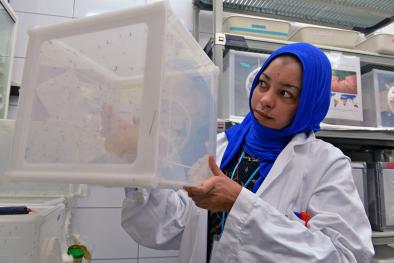Science Source
More Mosquito Days Increasing Zika Risk in U.S.
- Finds that in most of the country, rising temperatures and humidity since the 1980s have driven an increase in the number of days each year with ideal conditions for mosquitoes
- Finds that warming temperatures lead to more evaporation, which puts more water vapor in the atmosphere and increases humidity
- Analyzes how the number of days each year with ideal conditions for mosquitoes has been changing since 1980
- Finds that most major cities in the country—76 percent—have seen an overall increase in days conducive for mosquitoes from 1980 to 2016, and many regions have seen the mosquito season increase by half a month or more
- Finds that the top 25 cities that have seen the biggest increase in mosquito days since the 1980s are:

- Finds that Florida cities face the greatest overall threat from mosquitoes; most of its major cities face hundreds of days each year with climate conditions that are ideal for these insects
- Finds the top 25 U.S. cities with the longest average annual mosquito seasons are:
Related Content
Science Source
| The Lancet
El Niño and climate change—contributing factors in the dispersal of Zika virus in the Americas? - The Lancet
Shlomit Paz, Jan C Semenza
Science Source
| Proceedings of the National Academy of Sciences
Global risk model for vector-borne transmission of Zika virus reveals the role of El Niño 2015
Cyril Caminade, Joanne Turner, Soeren Metelmann et al
Headline

Apr 7, 2017 | Carbon Brief
Zika outbreak ‘fuelled by’ El Niño and climate change
Science Source
| MMWR. Morbidity and Mortality Weekly Report
Vital Signs: Update on Zika Virus–Associated Birth Defects and Evaluation of All U.S. Infants with Congenital Zika Virus Exposure — U.S. Zika Pregnancy Registry, 2016
Megan R. Reynolds, MPH; Abbey M. Jones, MPH; Emily E. Petersen et al



